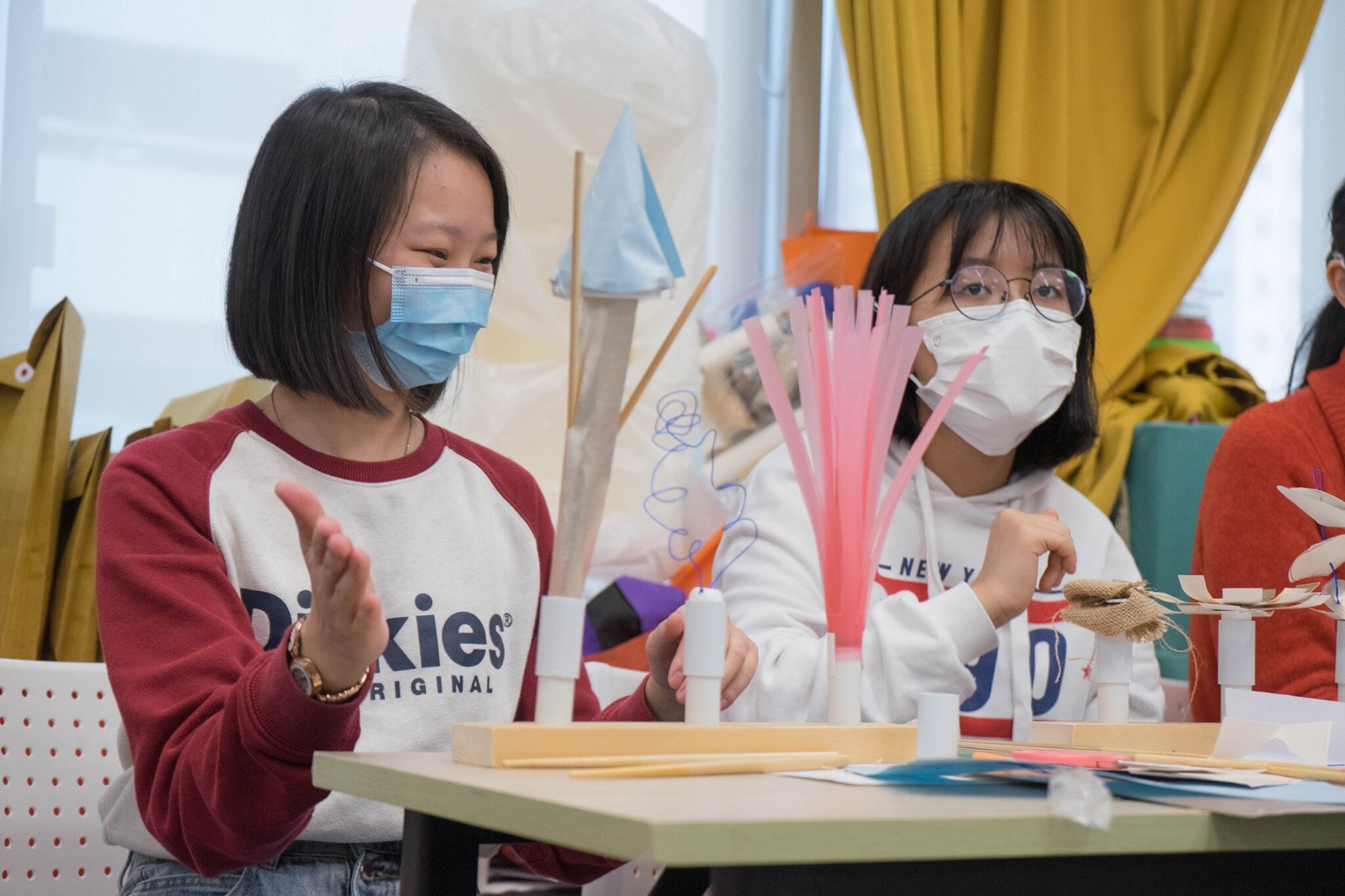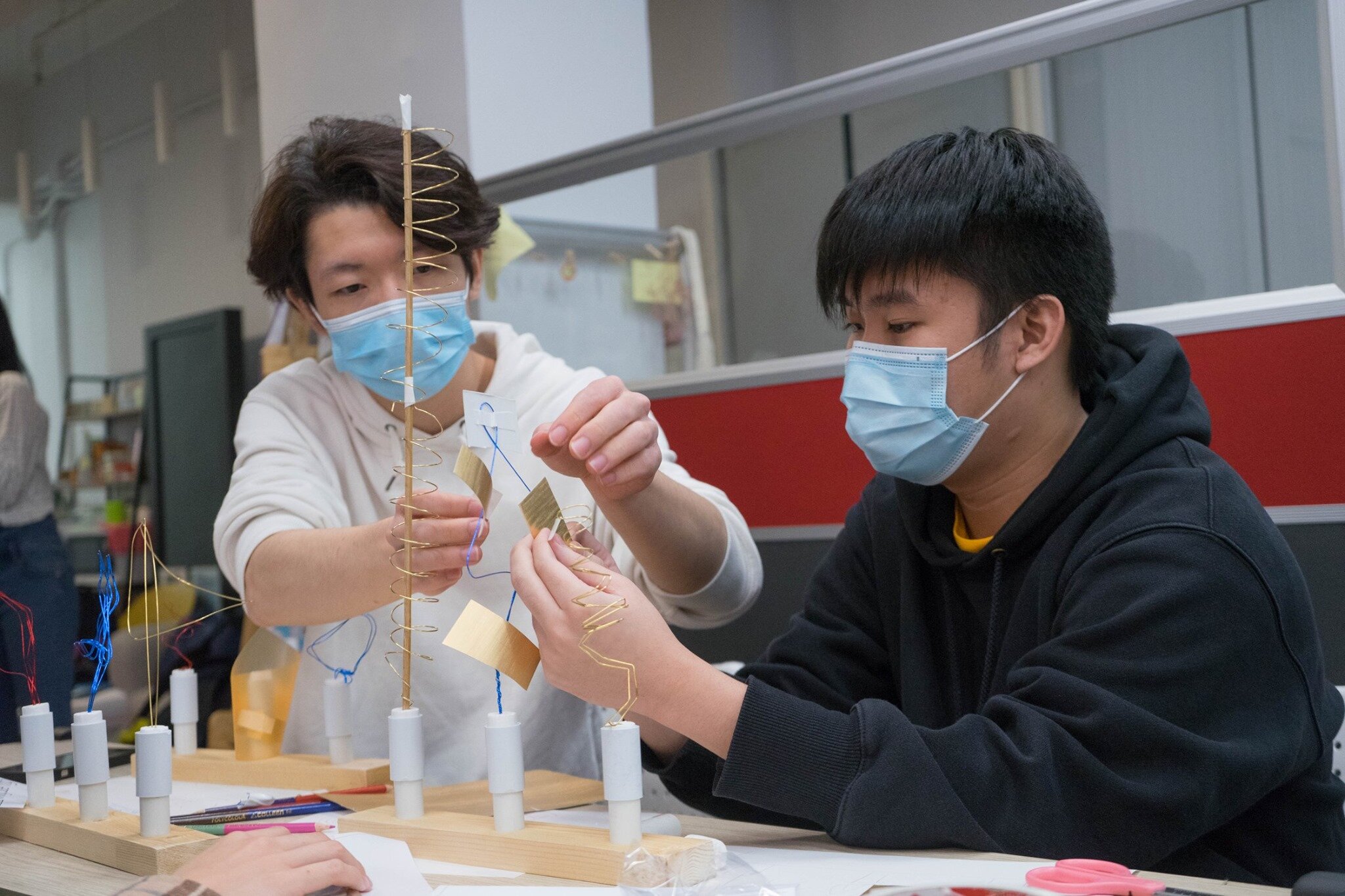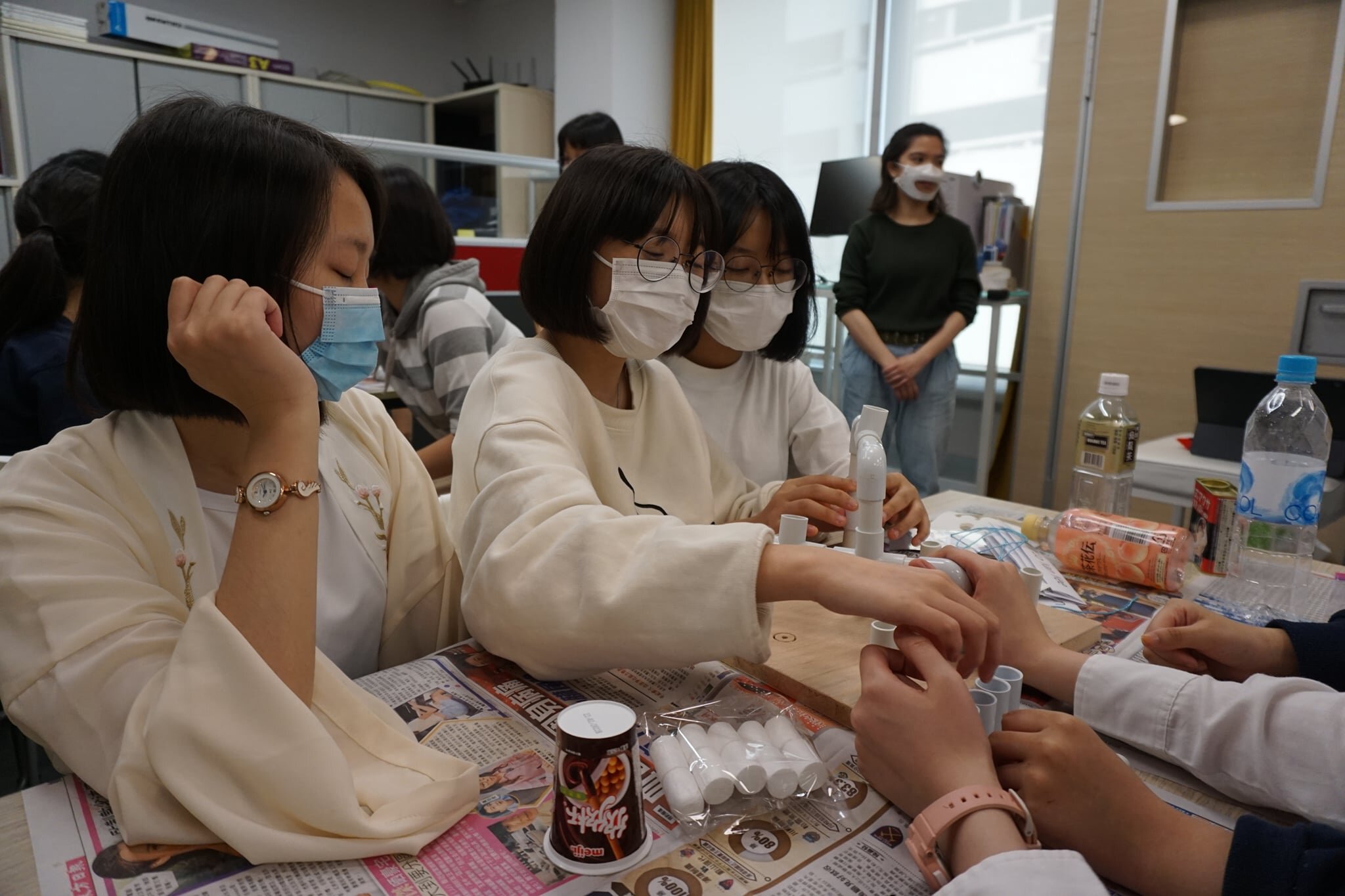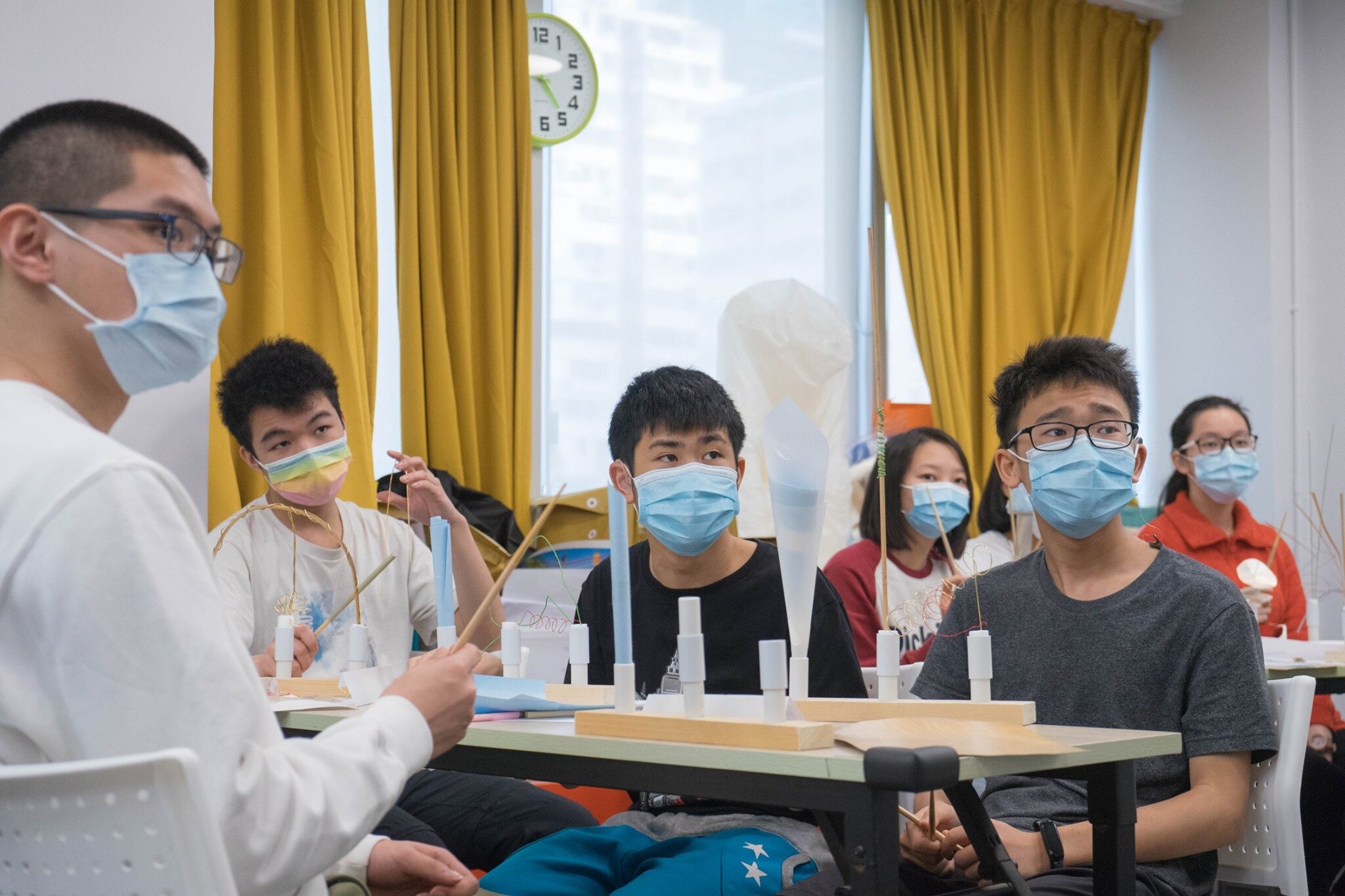Article Three: Sounding Bodies Intermedia in Hong Kong: Engaging Diverse Audiences
Article One: An Overview of the Sounding Bodies Intermedia in Hong Kong Project (Link)
Article Two:
Sounding Bodies Intermedia in Hong Kong: Intermedia Dance and Disability Aesthetics
Intermedia Dance Arts as More Than
(Link)
Building New Audiences through
Artistic Research Methods
Introduction
Artists often engage in a discovery process that unfolds over time rather than starting with a specific problem that they want to solve. As we dive in, we collect findings and then we do different things with them: experience them; play with them; reorder/recombine; and translate across artistic media. What happens to what we have when we take on these different approaches?
There are three fundamental approaches that can help activate an artistic research mindset:
Techniques of observation;
Techniques for the multi-perspectival; and
Techniques for the multi-sensory.
As we innovate in arts practices themselves, ie. bring together arts topics and practices that don’t normally get put together, we can expand the bandwidth of the arts. These investigations can lead to new intercultural projects and/or new approaches to solving old problems. This research uses art as the method for finding out something critical. It can, for example, creating a work on telling stories from different communities that are not normally chronicled, and then use that work to do cultural analysis.Using artistic research methods to building new audiences generates new interest in the arts and at the same time it strengthens the textures of the arts outcomes. Two primary activities—the implementation of a diverse workshop series and the creation of three video documentaries on diverse Hong Kong communities; the blind, Deaf, and the Ethnic Minority—furthered Sounding Bodies: Intermedia in Hong Kong’s work on building new audiences.
Part One: Workshop Series
From March- July 2021, Folded Paper Dance and Theatre Limited’s Sounding Bodies Project offered a set of workshops focused on the creative processes for the multi-sensory. In the initial set of workshops, we explored design-build activities for making sound sculptures that are accessible for different participants, that involve training in music-dance improvisations, and that offer an opportunity to engage in deep storytelling about nature. These highly process oriented workshops prioritized the experiential nature of making art—rather than the technical processes—that is through a process of doing or discovering as we went along. This open-ended approach informed aspects of how the professional artists, particularly the dancers, collaborated together. The edges between the sound materials, the props, the dancing, the music, and the films became more malleable so that the possibilities of touching space and forms of touching sound could become more viable.
Six of these workshops will held at the Jao Tsung-I Academy for the community-at-large (anyone can join in). We also offered a series of workshops for select NGO’s. Two workshops were held at SLCO-CR for a group of Deaf, hard-of-hearing, and hearing high school students who are a part of SLCO-CR’s bilingual education program in Hong Kong Sign Language and Chinese. Two Workshops were held at Kung Yung Koon for the local Chinese and Ethnic Minority community; two workshops were held at HKU under the auspices of the Common Core Learning Partner Program.
The overall goals for each workshop included:
1) To explore how we can multiply perspectives on Hong Kong through more inclusive approaches to sharing stories and histories through arts-making,
2) To generate new ways to listen and see through engagement with creative arts practices,
3) To link our artistic engagements with stories about natural spaces, and
4) To engage in alternative modes of problem solving through the arts.
Workshop One at SLCO-CR focused on “Making.” The objectives for Workshop One were:
1) To design and build miniature sound-sculptures that are accessible,
2) To develop ways to play the sound-sculptures through both music and dance music improvisations, and
3) To generate interest in new visual-sonic theatres of accessible ecologies.
In the first part of this workshop, participants engaged in the design-build of miniature sound sculptures that can activate multi-sensory engagement through sound, sight, and touch. This process involves brainstorming ideas; creating sketches and paper conceptual models; experimenting with materials, such as bamboo, paper, fabric, wire, and pre-cut sheets of metal; and making our own sound sculptures. In the second part of this workshop, we explored ways to play these unique sound sculptures and to engage in music and movement improvisation through games. In the last part of the workshop, we will co-create a set of dance-music improvisation performances. This workshop provided training in design and build processes, collaboration, creativity, and presentation-performance skills.
The SLCO-CR Workshops, March 13 and 20, 2021
Several Sounding Bodies Collective members were involved in the various workshops: Kanta Kochhar, Chan Mei Tung, Crystal Chau, Fode Alex Cheung, Peter Wong, Jeremy Leung, Vivian Wong, Soraya Chau, and Nikolas Ettel.
Part Two:
Sounding Bodies: Light, Image, and Empty Spaces
From May 7-9, 2021 at the Jao Tsung-I Academy (Kowloon, Hong Kong), Sounding Bodies: Light, Image, and Empty Spaces showcased two interconnected programs. The Interactive Sessions provided an opportunity for participating audience members to experience the unusual set pieces, the sound sculptures, the theremin, the video documentaries and the dance vignettes based on motifs from the dance performance in an immersive manner. The Sounding Bodies Dance Performances offered an up close experience in a multi-sensory venue in a way that included a full 70 minute dance that made use of and expanded on the elements made available in the Interactive Sessions.
The three video documentaries, a part of the Sounding Bodies initiative, developed through field research of Chan Mei Tung, the video documentary work of WingYan Yu, and the executive direction of Kanta Kochhar, involved research and documentation of three field conversations with members of the Blind, Deaf, and Ethnic Minority communities. The focus on the video documentaries was to tell a key part of their stories through the visual medium of film. When shared in the Interactive Sessions, the films included audio description, captioning in English and in Chinese, and access to the sound track. The exploration of experimental video documentary techniques was an effort to investigate what accessible film could mean in this context as well as create an intermedial approach for the films that melded together more fully with the other multi-sensory components of the project.
Video Documentaries for the Interactive Session
Rashad Minhas: Kung Yung Koon. Click Here. https://vimeo.com/615499446
Sam Tsui: VI Horizons. Click Here. https://vimeo.com/615500283
Sign Language Singers: Deaf Society of Hong Kong.Click Here. https://vimeo.com/615501014
Conclusion
In theatres, as we broaden our outreach to diverse audiences new images emerge, projected across the screen as the dancer(s) arc and gesture through the spaces in order tell many tales all at same time. Sculptures on stage made from living materials breathe their own lives into the space. Sign languages amplify through their unique linguistic composition of the visual-spatial. These myriad worlds of sense-bodies touch us just as we touch them. Such a rich poetics as we swing our arms out reaching toward the diverse communities appears under the sky, breathes the stillness of sounding bodies into what we have been and what we will become.




